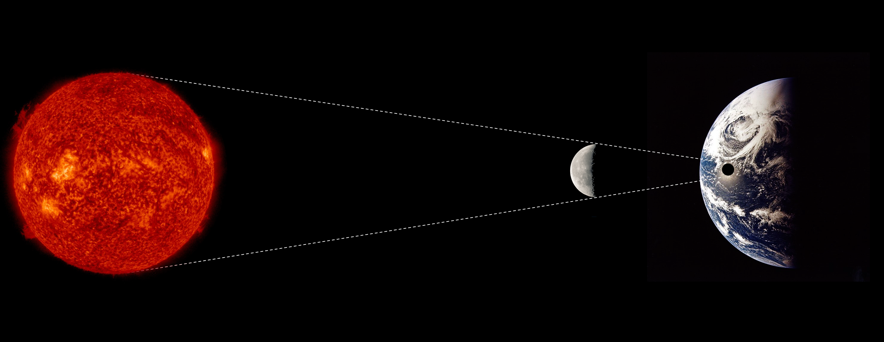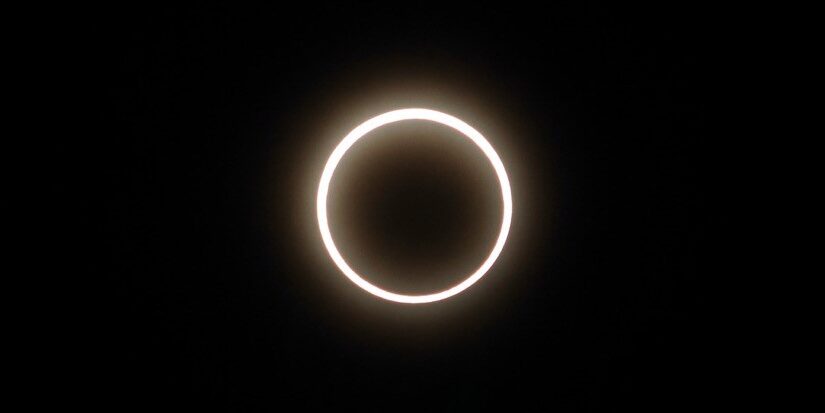At the early sunrise on June 10, some viewers in northern Ontario will have the chance to witness what is known as an Annular Eclipse.
Planning to witness the eclipse?
Remember: NEVER LOOK DIRECTLY AT THE SUN.
The sun’s intense light can cause instant eye damage. Most “ad hoc” solutions will not protect your eyes. The only way to safely see an eclipse is to purchase authorized ISO filters from a reputable seller.

Eclipses of the sun occur because the sun is usually about 400 times further away from the Earth than the moon and, conveniently, is about 400 times larger than the moon.
As a result, sometimes the moon appears to completely block the sun and the moon’s shadow is cast upon the Earth.

However, sometimes the distance to the sun is a little less than 400 times the moon’s distance and in those cases, the moon does not completely obscure the sun but leaves a small annulus (ring) of light around the sun — hence the name Annular Eclipse.
Where to witness this month’s eclipse?
This year’s Annular Eclipse is properly visible only to those people who live north / northwest of Lake Superior. Starting at sunrise (5:32 am local time), the sun will already be partially eclipsed.
If we follow the sun/moon rise and speed up time, we will see the moon gradually find a position within the centre of the sun, yet still leave the annulus of light around the sun.
Check out this animated simulation of the June 10 Annular Eclipse as seen from the Nagagamisis Provincial Park region (created with SkySafari 6 Pro):
If you are not far enough north, you will not be able to see the annular eclipse, but you will see a partial eclipse where a portion of the sun is hidden by the moon.
Feeling the eclipse
For those within the path of the annular eclipse, you will be treated to some amazing things:
- You may notice that the sky darkens a bit, but not nearly as dramatically as during a total eclipse
- The sky looks kind of funny (this is due to the light being polarized – direct light is hidden)
- Staring back down towards the shadows of leaves, you will see multiple images of the Annular Eclipse within those shadows. The crisscrossing of the many leaves actually creates tiny pinhole cameras!
- You may also notice that the birds begin the morning chorus, thinking that it is sunrise all over again
- Finally, you may notice a gentle wind come up as warm air is moving towards the centre of the colder air (where it is darker in the moon’s nearly complete shadow)

Interested in learning more about this Annular Eclipse?
York University will be putting on several programs on June 9 (the day before the eclipse) and June 10 discussing the eclipse.
Find more information here.
Haudenosaunee Confederacy and the solar eclipse
Ontario Parks greatly appreciates the assistance and guidance of Melanie Demers, former astronomy instructor at Six Nations Polytechnic.
It has been known for a long time that a Total Solar Eclipse was important in completing the confederacy of peace amongst five of the Haudenosaunee nations (Mohawk, Cayuga, Oneida, Onondaga, and Seneca — the Tuscarora nation was added to the Confederacy later).
In Haudenosaunee oral history, the Hiawatha wampum is said to have been woven during a total eclipse of the sun, establishing peace among the nations.
Published papers also support that a celestial phenomenon (probably a Total Solar Eclipse) coincided with the founding of the Haudenausonee Confederacy, marked by the creation of the Hiawatha wampum belt.
According to research, “during a ratification council held at Ganondagan, the sky darkened in a total, or near total, eclipse. The time of day was afternoon, as councils are held between noon and sunset. The time of year was either Second Hoeing (early July) or Green Corn (late August to early September (Fields, 1997)“[1].
Other findings have further supported this research. In his online article Dating the Iroquois Confederacy by Bruce E. Johansen [2], the conclusion held by many researchers is that the confederacy started in and around 1142 AD as that eclipse would have been total in the area of the peace treaty and agrees with other archaeological evidence.
The Solar Eclipse became an important astronomical tool to mark this great event, an event that represents the founding of the one of the oldest democracies[3] that has endured for centuries; upon which the world’s most powerful country based its own democracy [4].
[1] (Fields, A Sign in the Sky: Dating the League of the Huadenosaunee, 1997)
[2] (Johnson, Dating the Iroquois Confederacy, 1995)
[3] The Editors of Encyclopaedia Britannica. (2018, Oct. 4). Iroquois Confederacy. Encyclopedia Britannica. Retrieved June 1, 2021
